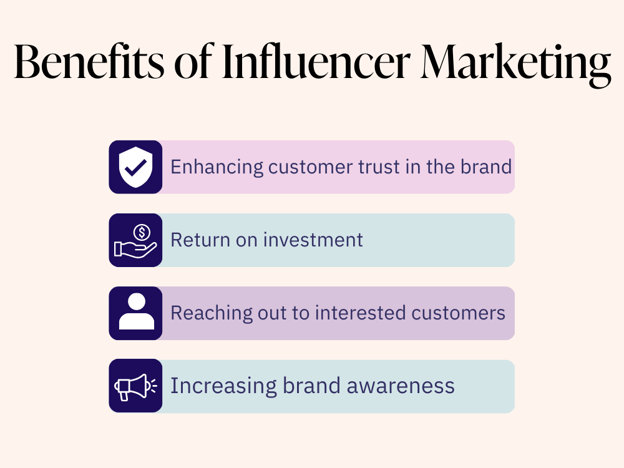
Never miss an important conversation about your brand again
Generate more leads from social media with impressive conversion rates
Connect with top influencers who your customers love
Measure your marketing campaigns with unparalleled precision
Take your customer satisfaction performance to the next level
Deliver top-notch content that generates traffic and sales
Stay ahead of the competition—all the time
Detect and fix problems before they become a pain
Gain access to never-before-seen social media insights for your brand
Never miss an important conversation about your brand again
Generate more leads from social media with impressive conversion rates
Connect with top influencers who your customers love
Measure your marketing campaigns with unparalleled precision
Take your customer satisfaction performance to the next level
Deliver top-notch content that generates traffic and sales
Stay ahead of the competition—all the time
Detect and fix problems before they become a pain
Gain access to never-before-seen social media insights for your brand

Brands seek to provide potential customers with the most streamlined access to their products, especially on social media. The influencer marketing strategy provides this streamlined access, as compared to traditional ads since ads on social media platforms can often be irritating to users. For instance, YouTube ads interrupt followers while they are watching videos, causing them annoyance and prompting them to skip the ad as quickly as possible.
Influencer marketing has gained immense popularity in recent times due to numerous advantages that have established it as an effective marketing strategy in delivering results, whether the aim is to increase brand awareness or drive sales.
In this article, we will delve into the concept of influencer marketing, its various types, as well as the strategies and methods that can be employed to derive the maximum benefit from it.
Influencer marketing is a type of marketing that allows companies to partner with individuals who have a large following on social media. By collaborating with influencers, companies can increase their brand exposure by having them promote their products or services to their followers.
Trust is a critical factor in this marketing method, as social media users tend to trust the influencers they follow. If an influencer suggests a product to their followers, it can have a more significant impact than if the follower had seen the ad randomly while browsing.
It is essential to choose the most suitable influencers for the brand identity. The right selection of influencers ensures that the product or service being promoted reaches the audience interested in it. This, in turn, can reflect in the conversion rate of influencer marketing campaigns that you launch.
Once the most suitable influencer or influencers for the brand are identified, the two parties can negotiate and come to an agreement. The agreement may take the form of a percentage of profits, for example, 10% for each transaction made through the influencer. Then, the influencer marketing campaign can be initiated, monitored, and evaluated.
The most crucial step in an influencer marketing strategy is to identify the most appropriate influencers for the brand. To accomplish this step correctly, one must differentiate between the types of influencers. Influencers can be classified based on the fan base they possess or based on the level of their association with the product or service.
It is not mandatory for an influencer to have a fan base as large as that of Cristiano Ronaldo or Joe Rogan to guarantee the success of a marketing campaign. In fact, four levels of influencers can be identified:
The level of association between the influencer and the product or service being promoted is crucial to the trustworthiness of the endorsement and, consequently, the effectiveness of the marketing campaign. Within this category, three types of influencers can be identified:
The core idea behind influencer marketing is to reach a broad audience of potential customers and endorse products or services to them through a trustworthy personality and their opinion, which can increase the likelihood of response. According to one study, influencer marketing boasts an average return on investment of $5.2 per dollar spent on it. The following are the key characteristics of influencer marketing:

Influencer marketing is often driven by the trust customers have in influencers, which is a major reason why brands use them to promote their products. This trust is often lacking in other marketing strategies and plays a significant role in motivating potential customers of an influencer's followers to make a purchase decision.
One of the crucial aspects of influencer marketing is its return on investment, which ensures that the expenses of the campaign are recovered and profits are generated. However, it is essential to work with the most suitable influencers for your brand to cover the expenses of the marketing campaign.
When dealing with influencers who are suitable for your brand and are active in the same field of specialization, you can ensure that the product reaches an audience segment that is interested in this field - namely, the followers of these influencers. This means that the product or service can potentially solve a problem that these followers may be experiencing, increasing the likelihood of them making a purchase decision. This targeted approach is often more effective than random targeting with ads, for example.
Dealing with influencers who have a large fan base can be beneficial for increasing brand awareness and reaching a larger audience. Even if not all of their followers end up making a purchase, it can still have a positive impact on people's awareness of the brand and what it offers. This can also help increase the number of potential customers in the marketing funnel, which can lead to more conversions and sales.
Although influencer marketing has many advantages, there are also several obstacles that can limit its effectiveness or even make it counterproductive. The most significant disadvantage is choosing influencers who are not a good fit for the brand. Since influencers act as ambassadors for the brand, unprofessional behavior or lack of suitability can harm the brand's image and reputation.
Additionally, selecting influencers who operate outside the brand's jurisdiction may hinder the sale of the product or service being promoted. To avoid these issues, it's important to clearly define the goals of the influencer marketing campaign before launching it, which will make it easier to measure the campaign's success.
While there is no one-size-fits-all approach to influencer marketing, there are several important steps that you should not skip before and after launching an influencer marketing campaign.
Defining the goals or objectives of an influencer marketing campaign is crucial before taking any further steps, as it helps determine the type of influencer to work with, taking into account factors such as the size of their audience and their relevance to the product or service being promoted.
Determining the main goal of the campaign also helps in identifying the resources that must be mobilized to initiate the campaign. You may need one or more influencers, and having a clear goal for the campaign helps in evaluating its success or failure after its completion.
Setting a virtual customer persona can help narrow down the options of influencers you can collaborate with, making it essential to have a clear understanding of the target audience before launching a marketing campaign.
The size of an influencer's follower audience often plays a big role in determining the cost of hiring them. The larger the audience, the more expensive it is to promote through them. Setting a budget beforehand helps ensure that these influencers can be compensated, whether through monetary payment or through offering discount coupons to their followers. This can help increase the effectiveness of the marketing campaign.
Selecting the right influencers is considered the most critical step in the process of marketing through influencers, as the appropriate choice of influencers plays a significant role in the success of the marketing campaign. In contrast, the wrong selection may harm the brand's reputation and, in the best-case scenario, may result in the failure of the marketing campaign only.
Therefore, conducting proper research is necessary to choose the best and most brand-friendly influencers on various social media platforms. Then, these options should be evaluated based on the goals, target audience, and allocated budget in the subsequent steps of the process.
Lucidya can be a valuable tool by providing comprehensive research and analysis on suitable influencers for their brand. With this detailed report, businesses can make informed decisions about the influencers they choose to work with, based on their budget, target audience, and campaign goals.
After choosing the most suitable influencers for the brand, the next step is to negotiate and reach an agreement between the brand and the influencers on how to promote the company's products and services. This includes agreeing on the compensation or percentage of profit the influencer will receive from the campaign, the type of content they will create, and any other specific requirements or details. In some cases, the influencer may also receive a free sample of the product or service to try and review before promoting it to their audience.
Once the marketing campaign is launched, it's crucial to monitor its performance to evaluate the extent of achieving the goals set in the first phase. If necessary, adjustments should be made to ensure the campaign stays on track. This stage is valuable in learning from any mistakes made during the campaign to avoid them in future campaigns.
Influencer marketing can be a profitable investment due to the many advantages it offers, however, success largely depends on making the right choice of influencers to work with. At Lucidya, we prioritize this crucial step to ensure it is executed as effectively as possible.